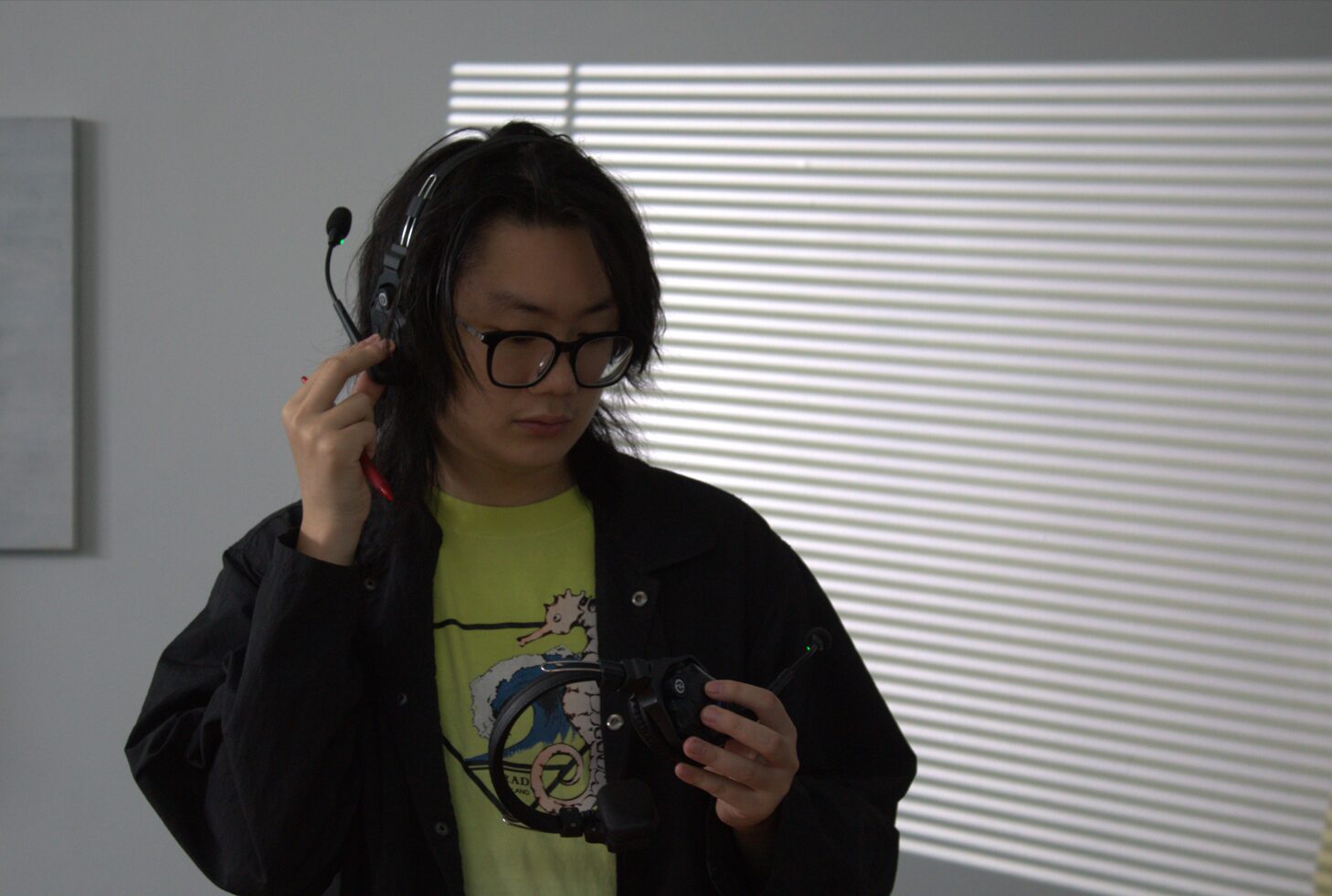In the world of film and video production, bringing a vision to the screen is a herculean task. It’s a combination of a creative eye, logistical precision, and increasingly, behind-the-scenes technological strategy.
While audiences worldwide consume content refined to seamless perfection, the journey from initial greenlight towards final delivery is fraught with challenges that demand a unique mixture of artistry and rigorous management. At the center of this complex process sits the producer, the prominent figure responsible for turning abstract ideas into tangible visual narratives.
Haoran Chen, an Atlanta-based film producer with over six years of industry experience under his belt and an MFA in Film Production from the Savannah College of Art and Design (SCAD), provides an insider’s perspective on this highly demanding role, particularly as production drives the rapid shifts of the digital and mobile-first era.
Known for his results-driven approach and expertise in both narrative and branded content, Chen has successfully led numerous projects, from vertical mini TV series amassing millions of views to effectual branded films for international renowned corporations such as Midea and Heli America. His work has achieved honors at international film festivals such as IndieX, Bridge Fest, and the London Director Awards, highlighting a capacity to relay content that interchanges across diverse audiences and various platforms.
The Producer as the Project’s Engine
Chen is well aware that the complexity of film production stems directly from the producer’s all-encompassing responsibility. “From the moment a project is greenlit, the producer becomes responsible for everything—from feasibility and budgeting to team assembly, contracts, locations, and cast negotiations,” Chen explains. “In the U.S., the producer is essentially the brains behind the entire operation.”
This foundational complexity exists regardless of the project’s scale or genre. It requires navigating intricate legal agreements, scouting and securing suitable locations, negotiating with talents and crew members, managing vast budgets that can fluctuate unexpectedly, and building cohesive teams under pressure. Chen mentions that in smaller productions, this role often expands further. “We often wear multiple hats—especially in smaller productions—handling everything from location scouting to liaising with lead talent,” he says. While acknowledging this can be very exhausting, he sees it as a silver lining: “it also can create some kind of direct communication with key resources, which furthers efficiency.”
In the average level of understanding, this type of role might seem very daunting. Chen simplifies it with a compelling metaphor: “I always describe the producer as the glue that holds the creative and logistical sides together. A project’s success often depends less on budget and more on how effectively it’s managed—and that starts with the producer.” This “glue” must understand the director’s artistic abilities while simultaneously ensuring permits are secure, equipment is functional, actors are on set on time, and the budget isn’t spiraling out of control. Every decision, delay, or unforeseen problem can funnel all the way back to the producer’s desk.
Cultivating an Environment for Excellence
Beyond the technical and logistical mastery, a producer must also be an adept leader and team builder. Creating compelling content relies heavily on the human element – the cast and crew who bring the vision to life. Chen believes that fostering the right environment is the key to success. “Creating a great film requires more than just mere talent—it requires trust,” he states. “I make it a top priority that every team member, whether it’s cast or crew, every voice is heard and valued. Open communication is a key aspect, especially when it’s under pressure.”
This process involves a delicate balance. Behind the scenes, the producer must sync the goals of disparate departments—camera, lighting, sound, art, wardrobe, etc.—and ensure they all have the resources needed to perform efficiently. On set, they must maintain a schedule discipline without stifling creative expression. “When people feel respected and supported, they naturally invest more into the project—and that passion translates directly into what we see on screen,” Chen observes. He concludes that “A good producer doesn’t just manage mere simple logistics—they cultivate an environment where excellence can surely thrive.” This human-centric approach adds another layer of complexity, requiring a notion of emotional intelligence and interpersonal skills that can ally alongside technical prowesses.
Vision Forged in Problem-Solving
While a producer contributes to the creative scope, their role is often most critical when things go awry. Real-world challenges are not perceived as basic exceptions but instead integral parts of the production process. Chen recalls a challenging experience during the production of “Mated to My Lycan King,” a project that garnered 1.4 million views on Snackshort despite early hurdles.
“Mated to My Lycan King was one of our earlier projects, and at the time, our experience in short-form drama was still developing,” Chen explains. “We faced several challenges—misbooked locations, last-minute script changes without producer approval, and overtime stress among the crew.” These are not just theoretical issues; they are the daily fires a producer must extinguish.
Chen’s response exemplifies the producer’s vital role in crisis management. “As the lead producer, I had to think fast and act quickly. I restructured the shooting schedule overnight, personally addressed crew concerns, and I realigned communication between the director and production.” This demonstrates that a producer’s vision is often less about dictating aesthetics and much more about navigating adversity.
“In projects involving tight budgets, success depends not just on mere planning, but on real-time problem-solving,” he said. “That’s where a producer’s vision becomes most crucial—not just in what’s created, but in how the team goes through it.” This ability to adapt under pressure is a testament to the strategic thinking required to maintain complex productions efficiently.
The Mobile Revolution: Storytelling Meets Technology
The rise of mobile platforms and the sudden shift in audience consumption habits have introduced an entirely new approach to the film production’s complexity, particularly in the wake of short-form content where Chen has seen significant success with series like “Gigolo Alpha” (1.7 million viewers on Playlet) and his music video “Passenger” (surpassing 550,000 views on YouTube).
“Traditional storytelling isn’t going away—but in the mobile era, the way stories reach people has evolved,” Chen notes. The average viewer’s fragmented attention span dictates into new narrative demands. “Many viewers don’t have the time to just sit through a two-hour film or binge an entire series. Instead, their fragmented time is filled with quick, emotional hits of content.”
This fundamental evolution impacts content creation itself. “That’s why emotional immediacy is now the most powerful experience in storytelling,” Chen proclaims. Unlike the classic slow-build narrative arc, short-form mobile content requires capturing attention instantly and delivering an emotional payoff without any delay. “You need to capture attention quickly and deliver emotional payoff without discretion. That shift is redefining how we create and consume stories.” This emphasizes not just creative adaptation but a deep, meaningful understanding of platform algorithms and viewer behavior, blurring the lines between creative production and technological distributional strategy.
Technology as Strategy: Beyond the Camera
This evolution brings us to an issue that is perhaps the most significant modern layer of productional complexity: the integration of technology is not just as much as a simple tool for making films, but for ensuring their success is in connecting with audiences. For Chen, especially in that sort of context for a short-form series, technology extends far beyond the walls of the production set itself.
“This question yields into a deeper layer of production—where storytelling meets data,” Chen observes. He mentions that in modern short-form series production, the physical act of filming is only about 60% of the formulae. “The other 40% lies in how we use technology to manage audience exposure and to optimize performance.” This highlights an evident shift for producers.
Success today relies heavily on data-driven decisions. “Success today depends on how well you can analyze audience reception, target content delivery, and also deploy materials at peak engagement times on the right type of platforms,” Chen explains. This requires familiarity with tools and strategies traditionally associated with marketing and data science. “Tools related to ad targeting, A/B testing, and ROI tracking are just as necessary when it comes to scheduling apps or budgeting software.”
Chen acknowledges a core metric in this digital landscape: conversion. “The ability to measure conversion—what it costs to attract a viewer versus to what they are willing to pay or to watch—directly impacts whether a project can succeed.” This financial and strategic layer, powered by technology and data analysis, adds a significant complexity that producers must now properly navigate. “Thus, content creation and tech strategy now usually go hand in hand.”
The Producer’s Tech Toolkit for Organization
Given the multitude of moving parts and the rapid pace of production, particularly in the short-form space, technology is also integral for the producer’s own organization and workflow management.
“As a producer, organization is absolutely key—especially when it comes to working on multiple fast-paced productions,” Chen states. He relies on a suite of tech tools to keep projects in queue. “I rely heavily on tools such as StudioBinder for call sheets, scheduling, and crew communication, Google Workspace for document collaboration and finally cloud access across departments.”
Financial management, a needed producer responsibility, also benefits from using dedicated softwares. “For budgeting and cost tracking, I use HotBudget or Excel-based templates tailored to short-form workflows,” he adds. Real-time communication across potentially dispersed teams is facilitated by platforms like Slack. “Slack is essential for real-time updates across production teams, especially when we’re working across uniquely diverse locations.”
In the end, Chen perceives these tools as enabling a crucial mindset shift. “It’s not just about using these tools—it’s about building a sustainable system that’s scalable and sufficient enough for everyone on the team to follow.”
This systematic approach, empowered by technology, allows the producer to stay ahead of any potential issues. “The right tech helps me stay proactive, not just reactive, and that’s very important to keeping things smooth on set and behind the scenes.”
The Evolving Producer Role in The Film Landscape
From the initial spark of an idea to the final delivery on a mobile screen, film production remains an inherently complex process. The producer’s role as the central engine—responsible for logistics, finance, team dynamics, and crisis management—sustains the foundation of this structure. However, the digital era has added profound new exciting layers, transforming the producer into a strategist who must also understand audience data, platform algorithms, and the technological tools that drive both systematic efficiency and content performance.
Haoran Chen’s journey and success in the vertical streaming space projects this trend. By blending creative intuition with rigorous logistical command and a keen eye of understanding the technological forces that are shaping audience engagement, he steers the multifaceted challenges of modern production.
His experience ultimately defines that in today’s media landscape, the producer is not just merely making films; they are architecting a complex system in which storytelling, human collaboration, and cutting-edge technology is able to channel with global audiences on a global scale. The ability to master this intricate interchange is what clearly defines the standard of the successful model producer in the 21st century.
Follow Haoran Chen on Instagram.
































